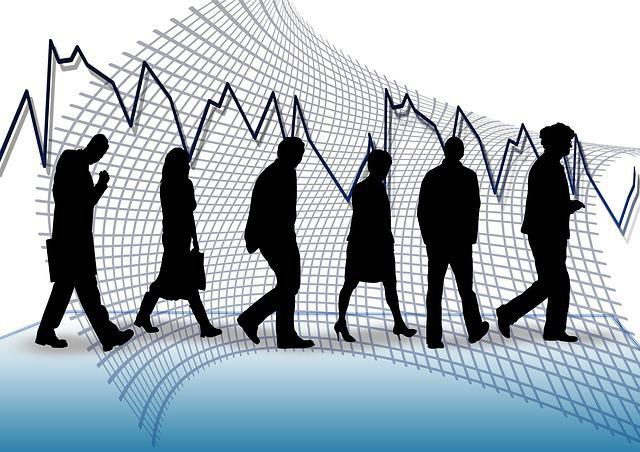Today, the problem of unemployment is an acute issue that arises in a market economy. In particular, it is relevant now for Russia. The economic downturn has affected and labor market. The consequences of unemployment are quite severe. In most cases, in relation to the personality, it leads to depression, which, in turn, leads to inaction. The latter contributes to the loss of self-esteem and qualifications, which entails the decomposition of the individual. The study of the problem of unemployment, as well as the search for ways to solve it, are therefore very relevant issues. It is also important to be able to determine unemployment rates. We will talk about all this in detail in this article.
Definition of unemployment and its types

What is unemployment? This is a socio-economic phenomenon, due to the fact that part of the population, which is economically active, wants and is able to work, but at the same time cannot find a job. This leads to the threat of loss of profession, qualifications, social status, as well as a decline in living standards. High unemployment is a serious problem for the state. However, as such, it inevitably arises in a market economy, as a result of the interaction between labor supply and demand. During a recession, it increases and decreases during periods of recovery. This is how the dynamics of the unemployment rate is manifested. However, there are always people who are trying to find a job.
Allocate three type of unemployment in the modern economy:
- frictional;
- cyclic;
- structural.
Frictional unemployment

It is determined by staff mobility. It includes people who are actively looking for work or are waiting for it to be received. Search always requires a certain period of time. Frictional unemployment usually has a voluntary nature and is short-lived, as job seekers in this case have certain skills that can be sold in the labor market. Some people change jobs voluntarily, in order to improve wages and its conditions, or they quit on their own because of disappointment in their chosen profession. Others are fired due to the reorganization of the enterprise, downsizing, etc. This includes people who are trying to find a job for the first time (for example, after graduation), who have temporarily lost their seasonal work (harvesting, harvesting firewood, etc.).
When these people find a place of service, others will appear. The peculiarity of this type of unemployment is the lack of information on available places available in a given period. Therefore, there will always be a certain number of persons exposed to frictional unemployment. It is inevitable and is considered even desirable for the economy. The fact is that some people can switch to a higher paid job with a lower paid job and then try to stay in a new place. In turn, this leads to the fact that they perform duties more conscientiously. This leads to an improvement in the quality of products and an increase in production. Others are convinced that they do not meet the requirements at the workplace they occupy, and are looking for a place with a lower pay. Thus, labor resources are distributed more rationally.
How to determine the level of frictional unemployment?

Frictional unemployment levels are determined by the ratio of the number of frictional unemployed to the workforce, expressed as a percentage. They are calculated using the following formula:
u frits = U frits / L * 100%.
Structural unemployment
It is associated with the emergence of new goods, replacing obsolete, as well as with a change in the market for services. The industrial structure of production is also changing. Enterprises begin to revise the technology and structure of production, which leads to the need for new personnel. Demand for some professions is decreasing, and for others it is increasing. However, the reaction to changes in the demand of potential employees is slow. It turns out that some of them do not have the skills necessary at this moment. Structural unemployed, in addition, include people who first appeared on the labor market, including graduates of secondary specialized and higher educational institutions, whose professions are no longer in demand in the economy.
In addition, unemployment caused by the expansion or change in the geography of production can also be attributed to this type, since in most cases qualified personnel are not able to move with their company. And in a new place may not be trained personnel. Thus, the main cause of structural unemployment is scientific and technological progress, which is changing the nature of demand in society.

Structural unemployment rate
Its level is determined by the percentage ratio to the workforce of the number of structural unemployed. The formula is as follows:
u struct = U construct / L * 100%.
Natural unemployment rate
Both in dysfunctional and in prosperous periods there is unemployment of structural and frictional types. It's unavoidable. The natural unemployment rate is the total number of unemployed two of these types as a percentage of the total labor market. It is characteristic of a situation in which a macroeconomic equilibrium is observed. Natural unemployment is observed when the number of people employed in the search for a place of service coincides with the number of free places. In other words, there is an opportunity to find a job. This level also presupposes the availability of a reserve of labor in society, which has the ability to quickly move in the economic sphere, taking up empty seats. For different countries, the natural unemployment rate is different. In particular, for France and Great Britain it is 5%, for Japan and Sweden - 1.5-2%, 8% - for Canada, 5-6% - for the USA. Economists believe that the average unemployment rate (natural) is 4-6%.
Real unemployment can sometimes be lower than its natural level, for example, in a war situation. In the case when the existing unemployment corresponds quantitatively to the natural level, it is believed that the functioning of the economy is carried out in full employment and full production is observed. In other words, the actual GDP produced in this case is equal to the potential.
Cyclical unemployment
When the number of free places becomes less than the number of unemployed, cyclical unemployment occurs. It is caused by a cyclical decline in production. Cyclical unemployment levels vary depending on the situation in the economy. It causes its decline in production, in turn, caused by business cycle phase (the name of this type of unemployment comes from here), characterized by a decrease in demand for services and goods. This leads to the fact that the staff of the enterprise is significantly reduced. An example is the unemployment caused in 2008-2009. world economic crisis. When the economy comes to life, the cyclical unemployment rate gradually decreases as new vacancies appear.
The first 2 types described above are inevitable and natural. However, cyclical unemployment is a deviation from the natural (structural and frictional). It is associated with fluctuations in activity in the economy.Thus, one must understand the difference between natural and actual unemployment.
How to determine the unemployment rate?
The level indicator is the main indicator of the phenomenon under consideration. This is the percentage of the part of the labor force that is unemployed. At the same time, full employment does not imply the absence of a situation where some workers cannot find application for their work. We determined that the appearance of structural and frictional unemployment is inevitable. Consequently, full employment does not equal 100%. With full employment, unemployment levels can be defined as the sum of structural and frictional unemployment. The formula is as follows:
u full = u fritz + u
Actual unemployment is the sum of the levels of all three types. However, it is easier to find it by the following formula:
u fact = U * 100% / L = U * 100% / E + U.
Here L is the labor force, U is the number of unemployed, E is the number of employees.
You can determine, knowing the actual unemployment rate, the unemployment rate is cyclical. The formula is as follows:
u cycle = u complete - u fact.
Consequences of unemployment
The presence of unemployment leads to certain consequences of a non-economic and economic nature. They occur most often with cyclical unemployment, and with structural unemployment to a lesser extent. Cyclical unemployment is a consequence of economic instability. It leads to forced underemployment. Structural unemployment crowds out industries that are outdated. On the labor market, therefore, newly forced unemployed appear.

Two types of consequences of unemployment have been identified by economists:
- non-economic;
- economic.
Non-economic are divided into psychological and social. We will determine the most important consequences from the point of view of their influence on the social and economic situation.
The positive economic consequences include:
- the formation of a reserve of labor for further restructuring of the economy;
- competition among workers, which serves as an incentive to develop their ability to work;
- stimulating productivity growth and labor intensity;
- a break in employment to improve education and retraining.
A small level of real unemployment, thus, can contribute to economic growth.
The negative economic consequences are as follows:
- production reduction,
- the depreciation of education,
- loss of qualifications
- government spending on assistance to the unemployed,
- lower living standards and tax revenues,
- underproduction of national income.
Positive social consequences include:
- increasing the social significance of the workplace;
- increasing freedom of choice of duty station;
- increase in free time.
Negative social consequences are:
- increased tension in society,
- exacerbation of the criminal situation in it,
- increase in the number of mental and physical diseases,
- decrease in labor activity of people,
- increased social differentiation.
Economic and social consequences at the individual and social levels
A serious national problem is the negative economic and social consequences. The economic at the individual level consists in the loss of part of the income or all of the income, in the loss of qualifications, and, consequently, in a decrease in the chances of finding a prestigious, highly paid job in the future. At the level of society, the economic consequences that unemployment has are in the underproduction of GNP, its lagging behind the potential actual GNP. The presence of cyclical unemployment means that resources are not fully utilized. Therefore, the GNP is actual less than potential.
On an individual level, the social consequences are that if for a long time a person cannot find a job, then he begins to experience stress, despair, he has cardiovascular and nervous diseases. It can also lead to family breakdown. In addition, the lack of a stable source of income in some cases pushes a person to commit a crime.

What at the community level? High unemployment primarily means an increase in social tension in it. The social consequences, in addition, are an increase in mortality in the country and the incidence rate, as well as crime. In addition, the costs of unemployment are the losses that society incurs in connection with the costs of training, education and providing people with the necessary level of qualification.
The fight against unemployment
Since the phenomenon under consideration is a serious problem of the economy, the state implements a number of measures aimed at combating it. The level of potential unemployment is monitored. Different measures are applied for its various types. However, the following are common to all:
- creation of employment centers;
- State payments of unemployment benefits;
- the creation of new jobs in the country (for example, during the crisis of 2008-2009, the state directed unemployed people to public work).
Fight against frictional unemployment
The following measures are used to combat the phenomenon of friction type under consideration:
- formation of a database of vacancies (including in other regions);
- the formation of special services whose function is to collect information about available vacancies.
In addition, it is possible to apply measures aimed at increasing labor mobility (the formation of an affordable housing market, increasing the volume of construction, changing legislation to abolish administrative barriers arising from relocation).
Structural unemployment
Structural unemployment can be fought as follows:
- create state institutions and services (including those operating on the basis of employment centers) aimed at continuing education and retraining;
- to help private institutions, as well as small training centers of this type.
These institutions should implement continuing education and retraining programs that promote the best training of the workforce. Retraining in a number of cities is carried out by population support centers, as well as educational institutions.
How to deal with cyclical unemployment?
You can deal with it in the following ways:
- pursue a stabilization policy, which is aimed at preventing deep recessions in production and, consequently, mass unemployment;
- create new jobs in the public sector.
In addition, the demand for goods should be stimulated, since with its growth production volumes increase, which contributes to an increase in labor.
Measures taken in Russia

Recently, at the level of state policy in the Russian economy, a number of non-standard, but effective measures have been taken to reduce the unemployment rate in Russia. This, in particular, early voluntary retirement, which can be done two years before retirement age. According to the government, this contributes to the release of jobs. Consequently, the unemployment rate in Russia is falling. The decrease is due to people who are already unemployed at this age. In addition, new jobs are being created through the promotion of small businesses and the help of individuals who want to start a business. The state is also obligated to employ young specialists who have completed secondary specialized and higher educational institutions, if they have a sufficient level of training based on the results of training.It must be understood that only with the simultaneous solution of several tasks can a significant reduction in unemployment be achieved in general.
Macroeconomics. Unemployment



